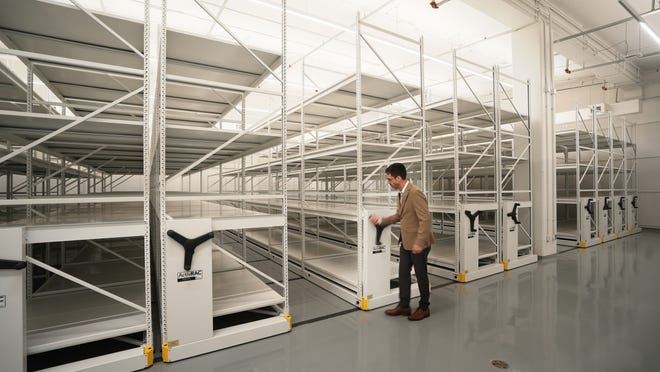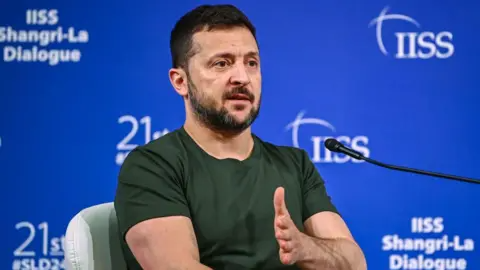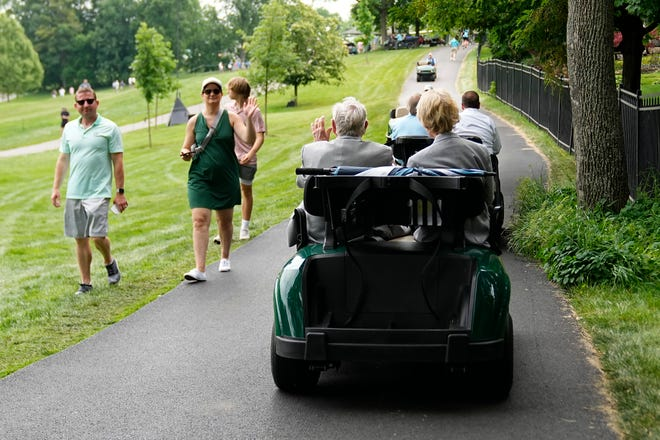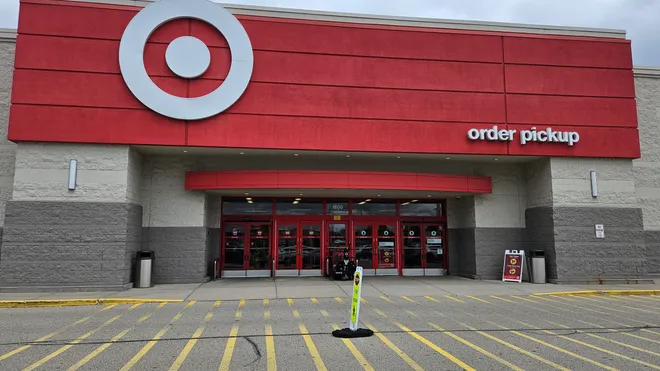Smart Columbus hasn’t gone away. After spending $50 million in grant money on everything from vehicle charging stations to a transit app to driverless vehicles, the group is now focusing on digital equity.
“That’s more of a focus than ever,” said Jordan Davis, Smart Columbus executive director.
The COVID-19 pandemic exposed what is lacking in terms of broadband inequities and basic services for low-income residents, Davis said.
Becoming a more prosperous city means bringing along everyone else, she said.
“We need to build a new ecosystem here,” Davis said, including getting more people connected for online learning and telehealth, and to social services so care can be delivered faster and monitored.
More:All Dublin residents to be offered ultra high-speed internet, but do they need it?

So now much of the Smart Columbus focus is on initiatives so more people have access to technology.
Davis cited the $2 million in federal COVID-19 relief money that Franklin County commissioners approved in September to establish the Community Information Exchange, which aims to better connect low-income residents with technology.
That includes more quickly connecting people to social services, and tracking progress, Davis said.
Franklin County Commissioner John O’Grady said that it’s obvious not everybody in Franklin County has equal access to the Internet.
“We want to make sure everyone has the ability to access it,” O’Grady said. “You have to support your health needs, your educational needs. We need to make sure folks have that access. It’s a big issue.
“The families without broadband are disadvantaged,” he said. A little over 8 million homes in the United States don’t have the ability to access broadband, he said, and Ohio ranks 30th of the 50 states for internet access.
“For Franklin County it’s a big issue,” he said.
Access to the digital world is vital for everyone in the modern economy, said Kenny McDonald, president and CEO of the Columbus Partnership, a group made up of regional CEOs.https://cm.dispatch.com/article-body/inline-desktop_062723_FourthOfJuly
“It’s no longer a luxury. It’s a necessity to fully participate in everything from education access to health care to work in today’s economy,” McDonald said. “Having access for all of our families in the region is another way to be competitive.
“It’s a workforce development strategy. It’s not a social exercise.”

This past week, Smart Columbus asked the state for part of $50 million in federal money that Ohio is receiving to go toward digital equity. The central Ohio region includes 11 counties, Davis said, and is one of five regions in the state applying for money.
She also mentioned $700 million coming to the state through the federal Infrastructure Investment and Jobs Act to expand and improve internet access across Ohio.
In 2021, the Franklin County Digital Equity Coalition was launched, an effort by more than 20 public, private and nonprofit organizations in central Ohio to bring computers and broadband access to low-income communities.
Benjamin Reid, public services director at the Columbus Metropolitan Library, sat on a committee for the group. He said the library is pursuing funding through the state for a new digital skills training program where at the end the participant would receive a laptop or similar device.
Pat Losinski, the library’s CEO, said the pandemic exposed the needs in the community when it comes to digital access, or the lack thereof. He said that in 2022 people connected to Wi-Fi 1.9 million times at the main library Downtown and at library branches, showing the need.
“You can’t hang out at a coffee shop all day long,” he said.
Transportation hits and misses
All of this comes after a series of hits and misses after Columbus won the Smart City competition in 2016. That came with a $40 million grant from the U.S. Department of Transportation for research on smart transportation systems, and a $10 million grant from Paul G. Allen Philanthropies aimed at trying out ways to reduce greenhouse gas emissions, generally by encouraging more people and companies to use electric vehicles.
“All of that money is depleted,” Davis said.

The original $40 million and $10 million grants helped pay for initiatives including charging stations for electric vehicles, self-driving shuttles, the Pivot app that helped drivers find places to park and a pilot project along North High Street, Morse Road and Cleveland Avenue that alerted drivers to red lights ahead while detecting potential collisions with other connected vehicles.
So far, there are 1,076 charging ports in the 15-county central Ohio region, 727 of them in Franklin County. The goal is to substantially boost that number by 2030, Davis said, as electric vehicles become more popular, and as Honda and LG Energy Solution build an electric battery plant in Fayette County, an investment that could reach $4.4 billion. According to Smart Columbus, a realistic goal for the charging ports should be 50,000 charging ports by 2030.

Brian Billing, energy efficiency and consumer programs manager for AEP Ohio, said it’s important to place for charging stations in low-income and rural areas outside Columbus. He said Smart Columbus and the Mid-Ohio Regional Planning Commission are applying for federal grant money for charging ports, emphasizing the need in those rural areas.
Davis said the Pivot app cleared the way for the Park Columbus app that people now use to find and pay for parking spaces.
The pilot project along High, Morse and Cleveland didn’t get as many volunteers to participate as projected because of the pandemic, Davis said.
As for the autonomous shuttles, well, that’s what tests are for, she said.
One shuttle that took people along the Scioto Mile Downtown attracted 16,062 riders from December 2018 through September 2019. But they didn’t run during snow emergencies because the snow shrouded sensors on the shuttle.
And while the two Linden LEAP shuttles took nearly 130,000 meals and 15,000 masks during the pandemic from St. Stephen’s Community House on East 17th Avenue to other parts of the neighborhood, a deviation in the steering system caused a shuttle to quickly stop in February 2020, just weeks after it launched.
The shuttles were temporarily halted. When the shuttles started up again, they didn’t carry passengers, just meals.
“The technology is not ready,” Davis said.

Smart Columbus now has nine employees and is still housed at offices at Town Street and Civic Center Drive. Its $2.5-million annual budget is funded by a combination of money from the city, Franklin County, the state of Ohio, the Columbus Partnership and American Electric Power.
McDonald said Smart Columbus is still worth having.
“Smart Columbus forces us to answer those questions to prepare for the future,” he said. “We preach all the time that prepared communities win. The economy is changing rapidly. It requires digital skills and digital infrastructure.”



































